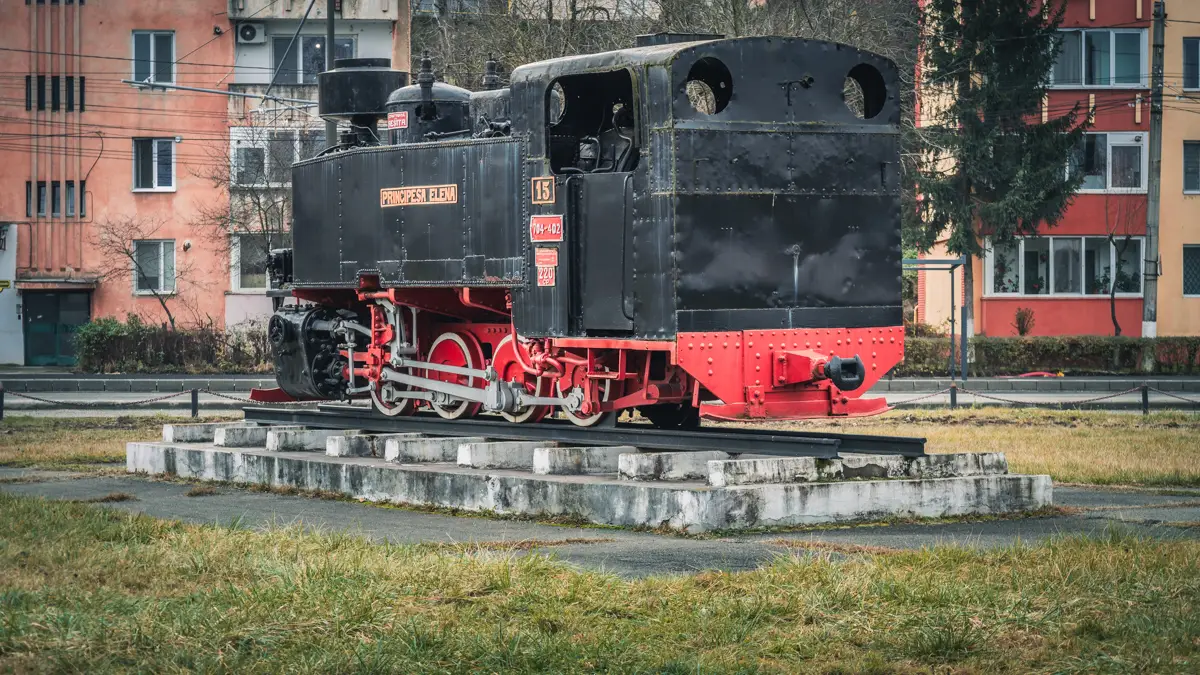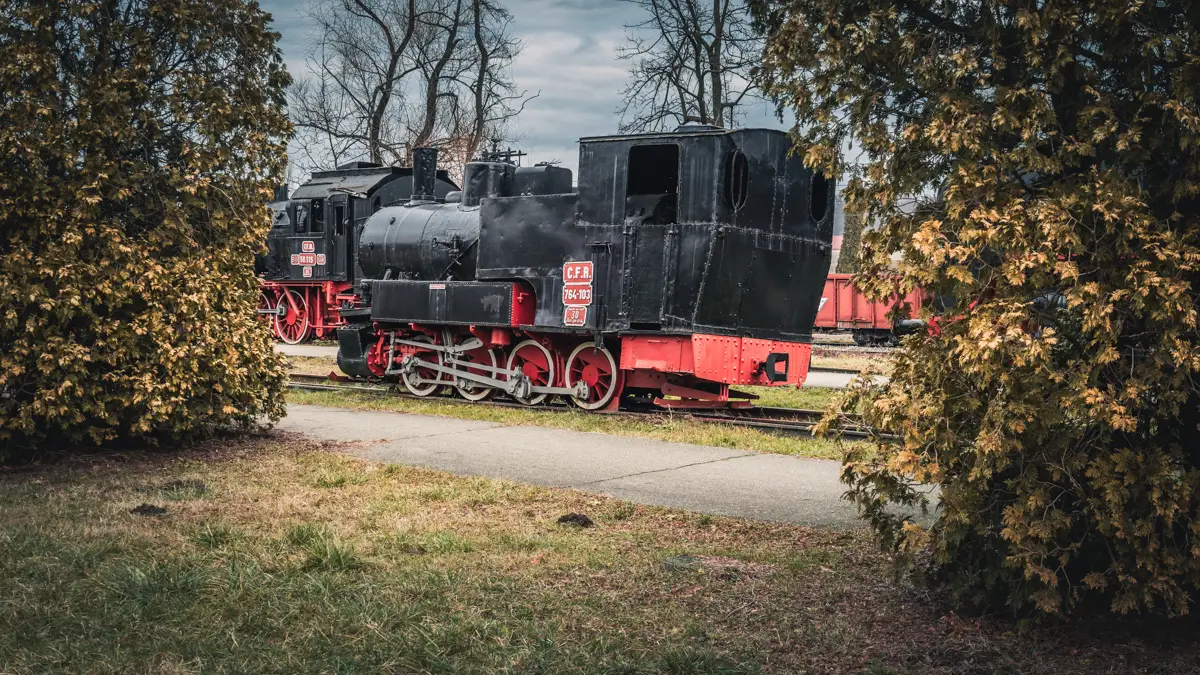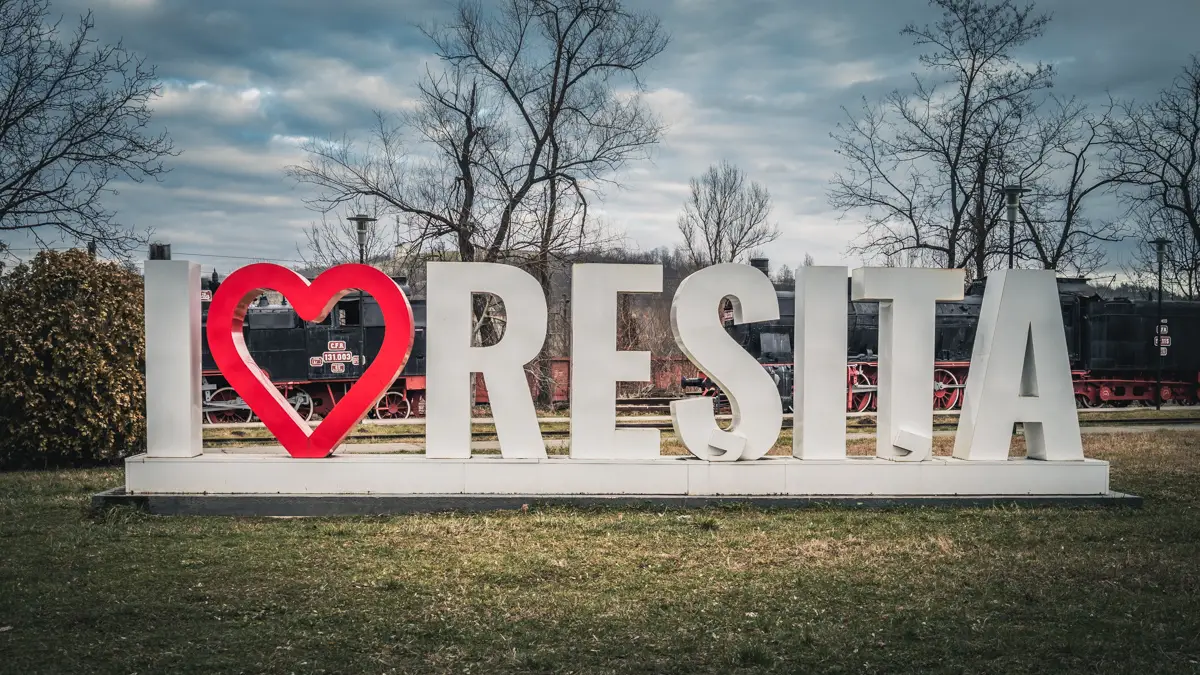Published on January 22, 2024 by Zoltan Nyaradi
Resita is a city in southwestern Romania that had a rich industrial history, particularly in the production of steam locomotives. The Resita locomotive factory played a crucial role in manufacturing steam locomotives for both domestic and international use. The locomotives produced in Resita were known for their robustness and reliability.
If you plan to visit beautiful places in Mountainous Banat like Valiug or Semenic ski resort then make sure to stop in Resita and visit the steam locomotive museum as well.
The steam locomotive museum is located between the old and the new part of the city, in the neighborhood called Triaj, or Railroad yard in English. In this open-air museum, you can find different types of steam locomotives that were built entirely in Resita, you can even find there the first steam locomotive which was built in the Resita locomotive factory. Also, you will find both standard and narrow-gauge steam locomotives. The entry is free and you can admire all the exhibits as much as you want.
Standard gauge steam locomotives
The standard gauge refers to a standardized distance between the two rails of a railway track. The international standard gauge is 1,435 millimeters (4 feet 8.5 inches).
CFU 28
It used to be part of CFR and was numbered 475.028. After being transferred, it worked on the UDR industrial railways in Reista with the name CFU 28 until 1960. This series of locomotives were built between 1896 and 1901 and during this period, a total of 41 pcs were built.
- Top speed: 30 km/h

CFR 131.003
The 131.000 series of locomotives, also known as Prairie, was a remarkable achievement. UDR experts, along with people from CFR, designed and built these trains. It was mainly used in the western part of Romania, in the Banat region. It was designed to pull both the freight and passenger trains, on short secondary lines.
- Top speed: 65 km/h

CFR 50.378
Modeled after the German G10 type, these engines were designed for both main and smaller tracks, mainly for hauling freight. Some of them were adapted for passenger transport.
- Top speed: 70 km/h.

CFR 150.038
The 150.000 series was created by enhancing the German DR 50 model. Various improvements were made, including the Heusinger valve gear, Knorr automatic brake, Friedmann injector, and a mix of fuel oil and coal combustion. After 1959, the locomotives were upgraded with thermosyphon and double Kylchap exhaust. These trains were the most modern type used by CFR. From 1946 to 1961, Resita manufactured 261 locomotives of this kind.
- Top speed: 80 km/h


CFR 142.072
The Berkshire type locomotives, designed for hauling large passenger and freight trains, stood out as the largest and most powerful in the Romanian Railways. They were capable of pulling 700 tons at a speed of 110 km/h. Based on the Austrian 214 model, the Romanian version incorporated several technological upgrades. Between 1937 and 1939, Uzinele de Fier si Domeniile Resita produced 37 locomotives of this kind.
Additionally, it’s worth noting that this particular locomotive stands out for having the largest wheels among its counterparts within the museum. The four wheels boast an impressive diameter of 1940 millimeters.
- Top speed: 110 km/h


CFR 230.128
In Germany, they designed the P 8 class steam locomotives specifically for hauling big passenger trains. These trains were sturdy, easy to take care of, and had low fuel usage compared to the pulling power, with a top speed of 100 km/h. Due to their great fit with the Romanian railway system, Resita started making them in 1932. By 1937, UDR had built a total of 139 locomotives of this type.
- Top speed: 100 km/h

CFR 50.025
The CFR fleet’s most widespread steam locomotive was made to pull trains on both main and smaller railway lines. The Series 50.000 locomotives came with features like the Heusinger valve gear, Westinghouse brake, Schmidt high-pressure system, and a mix of fuel oil and coal for burning. From 1919 to 1980, they operated on nearly all of Romania’s railway lines.
- Top speed: 50 km/h

CFU 29
This type of steam locomotive was designed for steelworks and other factory railway networks.

CFU 14
Similar to CFU 29, the CFU 14 as well was designed to pull heavy trains in steelworks and other industrial complexes.

Narrow gauge steam locomotives
Some of the narrow gauge steam locomotives from this museum needed a track with a distance between the two rails of 760 millimeters (2 feet and 5.92 inches). Some of the small steam locomotives were used in narrow forestry railways, industrial complexes and some of them were used on the CFR rail network to pull both passenger and freight trains.
Resicza
This small steam locomotive was the first one built in Resita in 1872. You will find it on a pedestal right at the entrance to the museum.

Principesa Elena
The 704.402 or Principesa Elena was the second superheated steam locomotive. It was used until 1970 in the Uzinele de Fier si Domeniile Reista (UDR).


CFF 704.209
This steam locomotive was built in 1917 by St.E.G Locomotive Factory in Wien, Austria.

CFF 764.103
This narrow gauge steam locomotive was a common type used on narrow forestry railways and it was used by CFR on its narrow gauge railway lines to pull both freight and passenger trains. These locomotives once were used in Targu Mures, Satu Mare, Alba Iulia, Turda and Sibiu. This steam engine had a top speed of 30 km/h.

CFF 704.404 and CFF 764.493
The 704.404 was used in the forestry railway (CFF stands for Calea Ferata Forestiera or Forestry Railways).
The CFF 764.493 it was used both by CFR on its narrow gauge lines and it was also used on the forestry railways

In my opinion, this museum must be visited because it’s located right next to the main road which connects the older part of Resita with the new part of the city. Right next to the museum, you will find a smaller paid parking lot if you arrive there by car.
You might also want to visit:
- The UCM Emblem in Resita – this is another place that you must-visit in the city of Resita. Since it’s located on the top of a larger hill, it is offering a stunning view of the entire city below.
- Resita city center – you can explore the city center of Resita as well. Not far from there, you will gonna find the old funicular which used to carry in the past limestone from a quarry located nearby Resita.





Leave a Reply